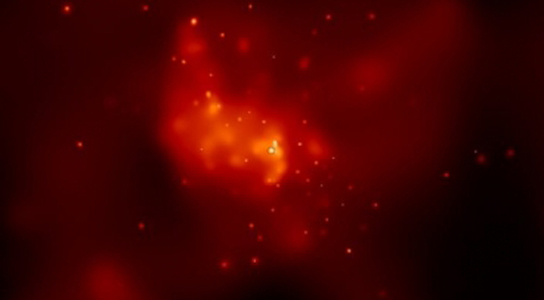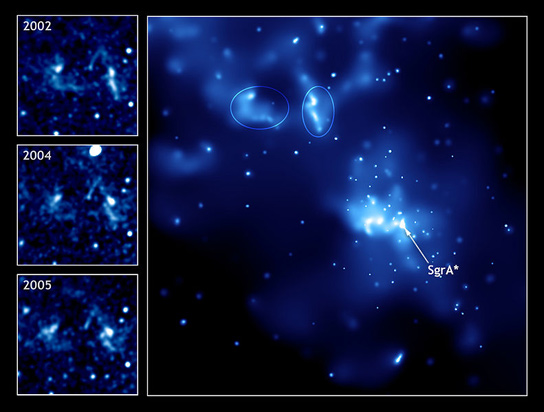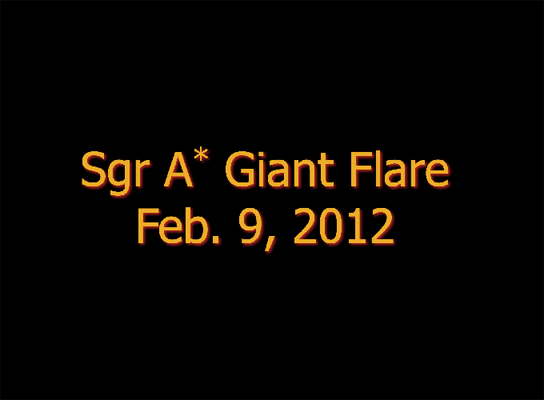
This false-color image shows the central region of our Milky Way Galaxy as seen by Chandra. The bright, point-like source at the center of the image was produced by a huge X-ray flare that occurred in the vicinity of the supermassive black hole at the center of our galaxy. Credit: NASA/MIT/F. Baganoff et al.
The supermassive black hole at the center of the Milky Way, Sagittarius A*, emits relatively little energy for its size, as much energy as Sol even though it’s 4 billion times as massive.
Astronomers have observed that nearly once a day, the black hole emits a brief burst of light before settling down. It’s yet unclear what causes these flare-ups, and scientists have been trying to characterize these periodic bursts in order to better understand how supermassive black holes evolve.

Recent flare-ups from the Milky Way’s supermassive black hole, Sagittarius A*. Credit: NASA
The scientists published their findings in the Astrophysical Journal. In this new study, the NASA Chandra X-Ray Observatory was used to detect the brightest flare ever observed from Sagittarius A+. The flare was located 26,000 light-years away, and was 150 times brighter than the black hole’s normal luminosity. The flare was observed for more than an hour before it faded away, and could give clues at how mature black holes like Sagittarius A* evolve.
Black holes are detected by the light they give off when they consume nearby matter. The centers of newborn galaxies and quasars are extremely bright, since those black holes give off massive amounts of energy as they devour surrounding matter. As black holes mature, they slow down, consuming less matter and appearing fainter.
In this low-accretion-rate state, they can blow away most of the energy. Chandra’s High Energy Transmission Gratings Spectrometer (HETGS) was used to analyze the incoming light.
One hypothesis is that when an asteroid gets close to the black hole, it stretches and consumes it, turning the remnants into radiation, which give off the flares.
It’s intriguing why Sagittarius A* gives off so little energy. By some estimates, considering the matter that surrounds Sagittarius A*, it should be a million times brighter than it is right now. This suggests that the black hole throws away most of the matter is should consume.

The above movie was created from the actual Chandra-HETGS observation. Red sources are dominated by low energy X-rays (2-4 keV), while blue sources are dominated by high energy X-rays (6-8 keV). White sources have a more even blend of X-ray energies in the 2-8 keV range. The middle frame of the movie is the 5.6 ksec showing the flare from Sgr A*, the bright white source near the middle of the image.
Reference: “Chandra/HETGS Observations of the Brightest Flare Seen From Sgr A*” by M. A. Nowak, J. Neilsen, S. B. Markoff, F. K. Baganoff, D. Porquet, N. Grosso, Y. Levin, J. Houck, A. Eckart, H. Falcke, L. Ji, J. M. Miller and Q. D. Wang, 23 October 2012, Astrophysical Journal.
DOI: 10.1088/0004-637X/759/2/95









Be the first to comment on "The Brightest Flare Ever Observed From Sagittarius A*"